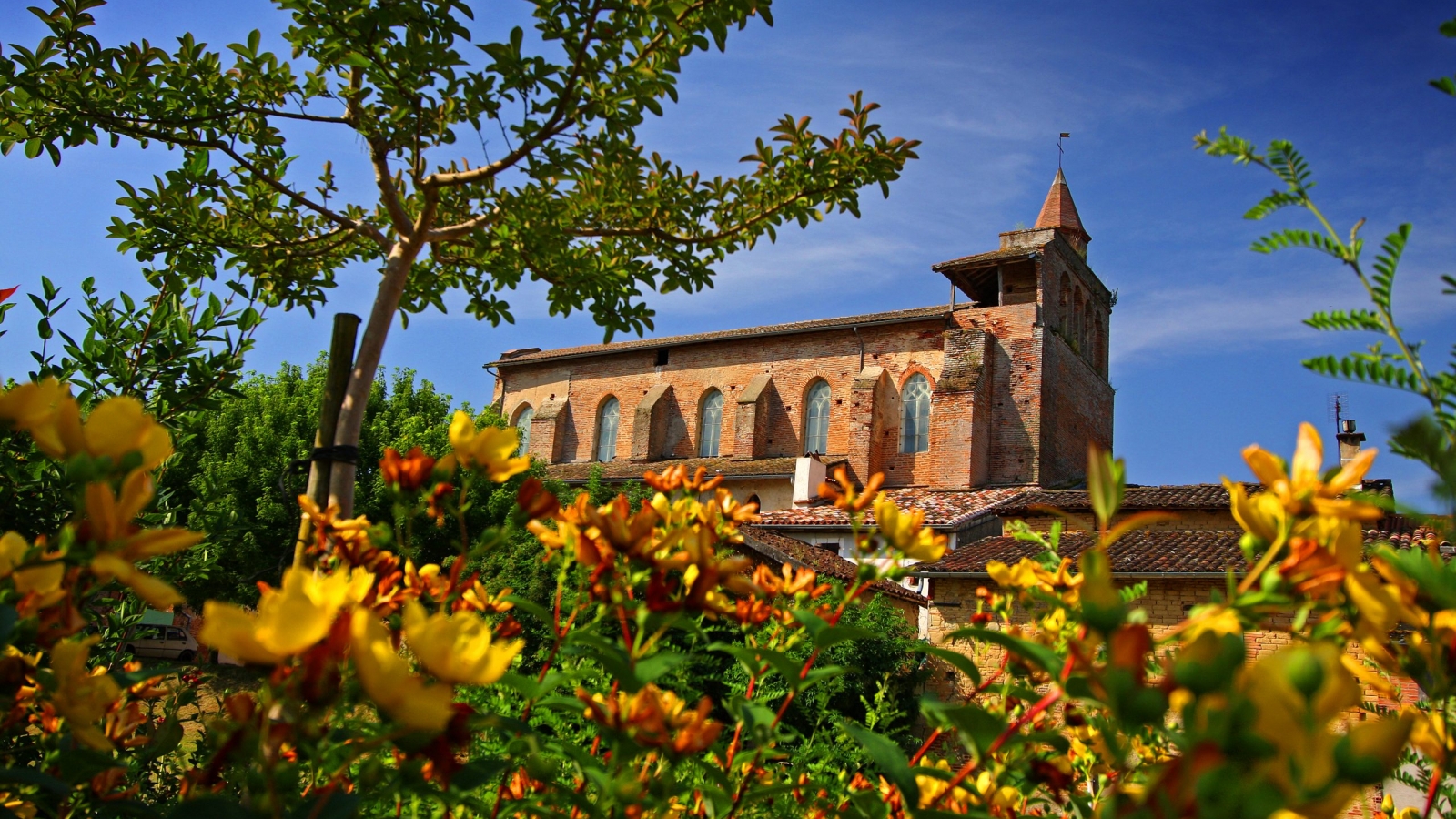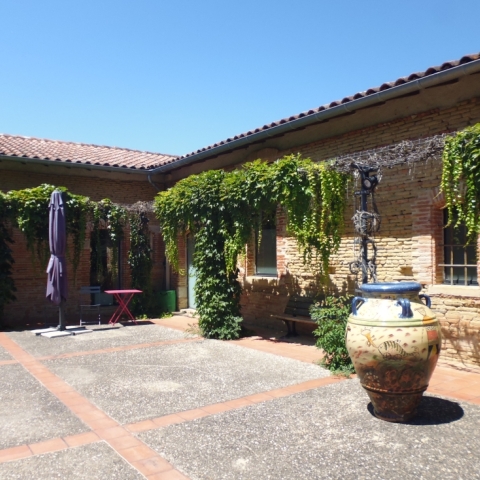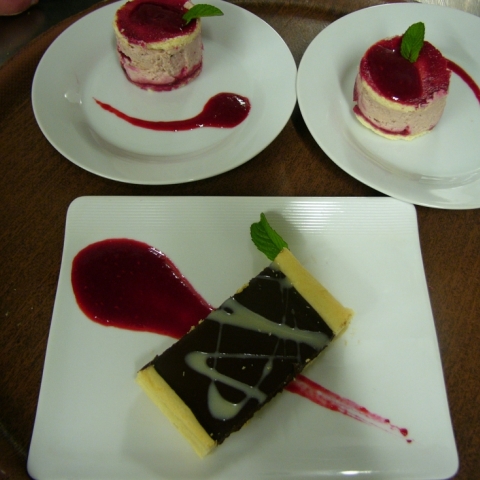
Giroussens
Giroussens is an old bastide town that was founded at the end of the 13th century and looks down on the Agoût valley. A home for potters, it has its own ceramics centre which leans on centuries of tradition to open up new means of expression in contemporary ceramic art.
Giroussens, a town of brick and ochre
Giroussens offers a magnificent view of the Agoût river and its valley. Clay and earth are an integral part of the town’s history, which you can see writ large on it brick facades in rose and ochre.
As you wind down Giroussens’ little streets you can’t help but be charmed by the brick buildings. And if you keep on walking you’ll get to a magnificent vantage point where you can gaze out across the entire valley.

The Church of Saint-Salvi
Constructed at the end of the 13th century, then burnt down in 1562 by the Protestants of Lavaur, the church was back in use by the end of the 16th century. The main walls are original, but the vaults have been reconstructed. The red brick exterior of the building gives little indication of the richness of the interior decoration, where you get an impressive mix of gildings, blue and red colours, wood carvings and paintings, not to mention altarpieces, one of which is beautifully ornamented with vine branches and is classified as a historical artefact. The church is also blessed with wonderful acoustics.

The Château of Belbèze
The château is also known as the Lucie Bouniol Château in honour of its owner, who was a famous early 20th century sculptress. She was both a contemporary and confidante of the writer Colette, whom she met at the Palais Royal in Paris. The ceramics centre is situated in an old outbuilding of the chateau, which was given to the community on the condition that there would always be a space within it dedicated to Bouniol’s work.

A history of potters
In the ninth century Giroussens was a small fortified village founded by the Viscounts of Albi to protect the access route to their chateau, Pech Mascou, which sadly no longer exists.
In the 13th century Amalric de Lautrec granted certain privileges to the inhabitants of the bastide village, including the right to elect their own consuls, to fish in the rivers, to hunt in the forests, and above all to take all the wood they might need for heating, house-building or work.
This access to wood allowed the locals to heat their furnaces and so develop the pottery that would make the village famous in the 16th century, producing painted terracotta based on Italian ceramics with lead-based varnishes.
In the 17th century pottery had fallen out of fashion to be replaced by earthenware and porcelain. At the time of the French Revolution of 1789 the potters lost their privileges. Little by little the furnaces fell into ruin and production ceased in the 19th century.












